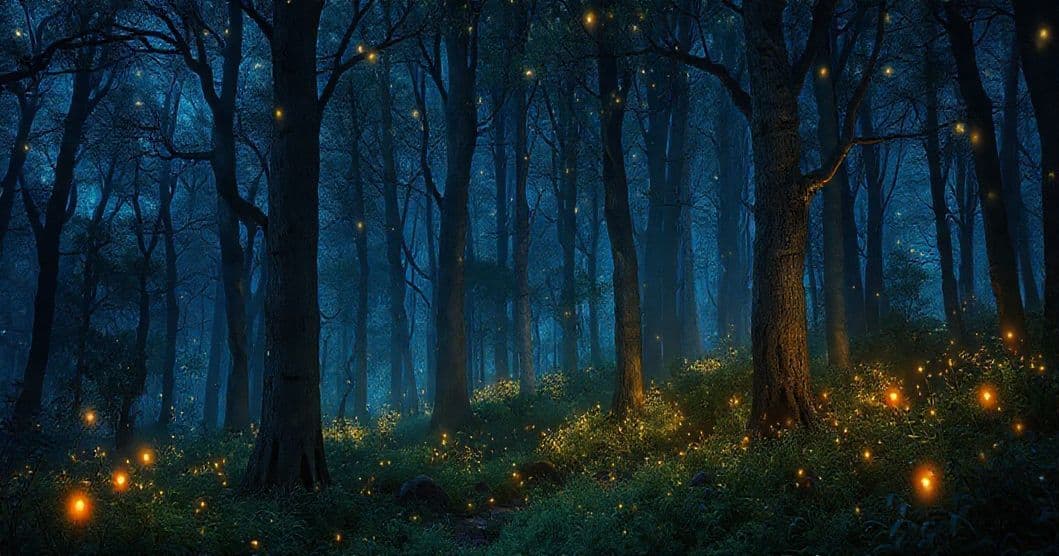Part 1: Dream Presentation
The night sky has long been a canvas for the human psyche’s most profound imaginings, and for this dreamer, those imaginings manifest in recurring, surreal celestial visions. These dreams are not fleeting fragments but persistent, emotionally charged experiences that revisit the mind with striking consistency. The dreamer describes skies that defy natural laws—either split between two suns or moons, or filled with an impossibly dense, star-strewn expanse reminiscent of digital art or video game environments. The color palette is equally arresting: a deep, blood-red hue dominates, abruptly splitting into contrasting tones as if the heavens themselves are shifting channels. Most vividly, there appears an enormous, luminous full moon—so bright it illuminates everything around it—framed by those perfectly symmetrical, almost cartoonish clouds that feel both familiar and alien. Yet the most consistent emotional undercurrent is an overwhelming wave of nostalgia—a bittersweet longing that seems to transcend time, as if the dreamer is mourning something ancient or lost. These visions occasionally evoke the stark, geometric beauty of video game skyboxes, specifically referencing Half-Life 1 and RAGE, suggesting a connection to digital nostalgia or a significant cultural memory.
Part 2: Clinical Analysis
Symbolic Landscape: The Dual Heavens as Archetypal Imagery
Want a More Personalized Interpretation?
Get your own AI-powered dream analysis tailored specifically to your dream
🔮Try Dream Analysis FreeThe recurring dual celestial bodies in these dreams carry powerful symbolic weight. In mythology and psychology, the sun and moon represent fundamental opposites: light/dark, action/receptivity, consciousness/unconsciousness. Dreaming of both simultaneously suggests a psychological integration of these opposing forces—a desire for balance or a recognition of duality within the self. The 'impossibly' starry sky or hyper-detailed digital heavens may symbolize the vast, uncharted territory of the unconscious mind, where creativity and possibility know no bounds. The abrupt color change in the sky could represent internal conflict or emotional transition, while the large, bright full moon—framed by soft clouds—might embody the dreamer’s need for comfort and illumination amid uncertainty. The reference to Half-Life 1 and RAGE skyboxes introduces a layer of digital nostalgia, suggesting a connection to a specific period of intense engagement with technology or media that now feels both distant and yearned for.
Psychological Currents: Nostalgia and the Unconscious
From a Jungian perspective, recurring dreams often reflect the collective unconscious and personal archetypes. The dual celestial imagery may stem from the archetype of the 'world tree' or 'axis mundi'—a symbol connecting the heavens, earth, and underworld. In this case, the dreamer’s recurring visions could be synchronicities, meaningful repetitions signaling unresolved psychological themes. The overwhelming nostalgia suggests a process of mourning or longing for a lost aspect of self or identity. According to Freud’s theory of dreams as wish fulfillments, these dreams might represent an unconscious attempt to reconcile conflicting desires: the yearning for order and beauty (the perfect sky) versus the chaos of change (the abrupt color shift). The digital skyboxes from Half-Life and RAGE hint at a connection to a specific developmental period, perhaps adolescence or early adulthood, when video games and digital worlds became deeply formative.
Emotional Context: Waking Life Triggers and Unresolved Longing
The emotional intensity of these dreams—overwhelming nostalgia—points to deeper emotional currents in the dreamer’s waking life. Recurring dreams often surface during periods of transition, uncertainty, or significant life changes. The dreamer’s 'otherwise normal dreams' contrast with these recurring celestial visions, suggesting that the sky imagery serves as a metaphor for something unprocessed. The dark red hue might symbolize passion, danger, or intense emotion that remains unacknowledged. The 'impossibly' perfect elements (stars, moon, clouds) could represent a longing for simplicity or control in a complex world. The digital references might indicate a nostalgia for a time when technology felt more innocent or when specific media experiences were transformative. This could connect to a period of professional or personal stagnation, prompting the unconscious to revisit formative experiences.
Therapeutic Insights: Navigating Recurring Dreams and Emotional Integration
These recurring dreams offer rich material for self-reflection. Journaling exercises that track the specific details of each dream—recording the emotional tone, specific celestial elements, and any waking associations—can help identify patterns. Dream incubation, where the dreamer sets an intention to explore a specific theme before sleep, may reveal more about the source of the nostalgia. Mindfulness practices could help process the overwhelming emotional weight, allowing the dreamer to separate the dream’s emotional intensity from waking reality. The dual celestial imagery invites reflection on balance: Are there conflicting aspects of self or life that need reconciliation? The digital skyboxes suggest reconnecting with a past self who found meaning in specific cultural touchstones, perhaps revisiting those interests or values. By integrating the nostalgic elements into present life, the dreamer can honor the past without being trapped by it.
FAQ: Navigating the Dreamer’s Questions
Q: What does dreaming of dual suns or moons signify?
A: Dual celestial bodies often represent psychological duality—balance between opposing forces (light/dark, conscious/unconscious) or unresolved conflicts. It may signal a need for integration rather than division.
Q: Why does the dream feel so intensely nostalgic?
A: Nostalgia in dreams typically reflects longing for a lost aspect of self, a past relationship, or a simpler time. The dream’s repetition suggests this longing remains unprocessed, needing acknowledgment and integration.
Q: How can I use these dreams for self-discovery?
A: Reflect on the specific details of each dream (colors, textures, emotions) and journal about waking associations. Identify recurring themes that may connect to current life transitions or unmet needs, then explore those themes through creative expression or conversation.
